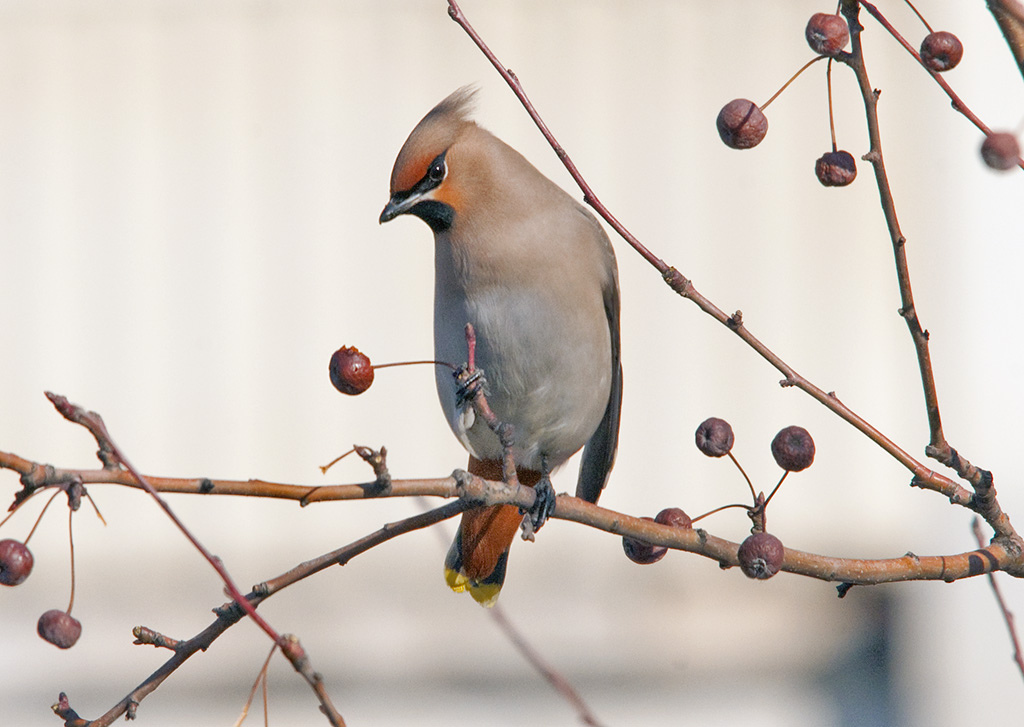News & Events
Latest News
Volunteer Programme April 2019 - September 2019
17.05.2019
Screening For Life Walk 01/07/2015
18.06.2015
Facebook Page
Waxwings Flock to Rhuddlan
Date: 06.12.2012
Type: Biodiversity
Waxwings are flocking to Britain in search of food. These delightful small birds migrate from Scandinavia where they breed, when the berries they consume become scarce. 2012 has been an unusual year in terms of weather – and this has contributed to the failure of fruiting in Scandinavia, forcing the birds over to our shores. They can be recognised by their prominent crest, reddish-brown plumage and black mask over the eyes. The tail has a yellow tip, and the wings have some yellow and white patterning.

Waxwings have been arriving in Denbighshire for the past few weeks, and Rhuddlan is no exception. On Friday 30 November around 200 waxwings were recorded at Rhuddlan Pond Local Nature Reserve (LNR) by Denbighshire Countryside Service’s Biodiversity Officer, Lizzy Webster. “It’s fantastic to see them in such large numbers” she said, adding “Rhuddlan Pond has only been managed as a nature reserve for a few years, but it already supports so much wildlife”. The large flock of waxwings attracted birders and wildlife enthusiasts from the area to catch a glimpse of this winter spectacle.
The way Rhuddlan Pond LNR is managed is key to the site being attractive to waxwings. As they feed on berries, the presence of fruiting trees and bushes, such as hawthorn, is vital. The reserve is managed by Denbighshire Countryside Service on behalf of the Management Action Group. All kinds of wildlife life make the reserve their home – including a wide variety of birds, flowering plants, dragonflies and water voles.
Other good places to spot waxwings are supermarket car parks, where they feed on the berries of cotoneaster plants, which are often planted as part of landscaping schemes. If you would like any further information about waxwings or other wildlife in Denbighshire, please contact Lizzy on 01824 708263 or elizabeth.webster@denbighshire.gov.uk.



